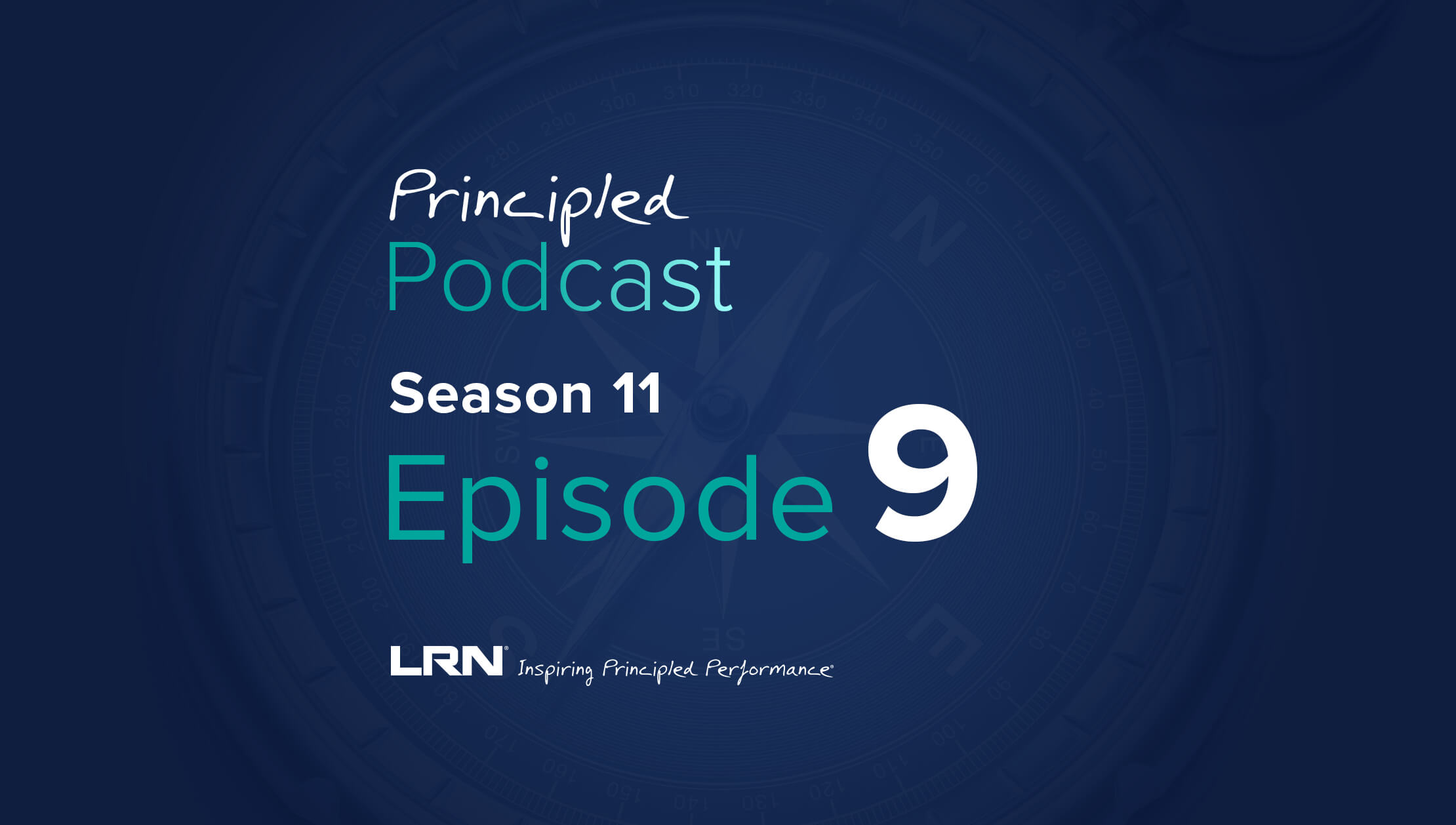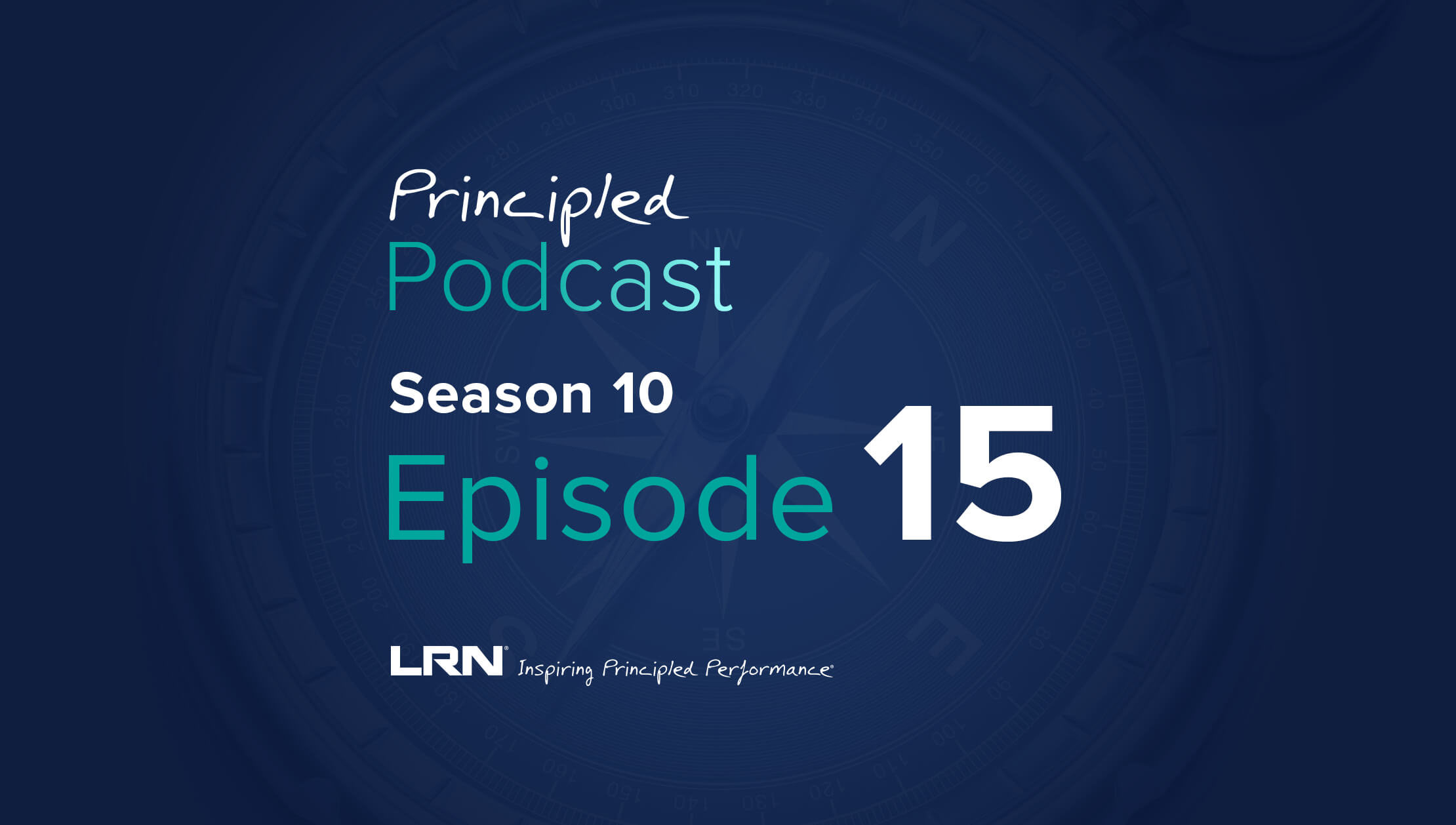Humans have long valued the principles of justice and fairness as the backbones of healthy societies. Turns out they are the backbones of healthy institutions and cultures as well. According to recent research from LRN, these principles are among those that have an outsized influence on whether people make ethical choices and speak up about misconduct—and therefore are a critical lever to protect companies’ brand, reputation, and mitigate risk.
In this piece, we’ll explore the current state of organizational misconduct and the extent to which it is reported—or the reasons it isn’t—as well as how these trends vary based on the health of a company’s culture. We’ll identify the cultural factors that are most predictive of ethical conduct and speaking up about misconduct. Finally, we’ll share tangible solutions for improving these factors in your own organization.
Throughout this piece, we refer to a dimension of corporate culture commonly understood in the ethics and compliance community as Organizational Justice, which we define as how standards of conduct are applied consistently throughout an organization and whether employees have confidence in reporting and investigative processes.
All data cited was drawn from a survey of nearly 8,000 employees around the world, representing 14 countries, 17 industries, and from the shop floor to the c-suite. Full details and methodology can be found in the LRN Benchmark of Ethical Culture report.
What we found, in brief:
- Nearly 2 out of 5 employees say they witnessed misconduct or unethical behavior in the past 12 months. Encouragingly, 4 out of 5 reported their observation.
- These results vary significantly when sliced by different employee demographics, such as tenure, hierarchy, role, and industry.
- Most importantly, companies with the strongest ethical cultures are in a more advantageous position to properly address misconduct.
The headline
Most employees who see something, say something—although a significant minority don’t
Almost 40% of survey respondents say that they’ve observed misconduct or unethical behavior in the past year, with conflicts of interest and employee health and safety topping the list; the latter could be due to the impacts of COVID. Encouragingly, more than 80% of those that witnessed misconduct reported their observation. While this is good news, let’s not miss the forest for the trees: nearly 20% of employees didn’t report their observation, posing a significant legal and reputational risk for their companies and raising questions about the health of their organizational culture. The costs of not reporting are significant.
If you see something, say something: How employees are experiencing misconduct at work

Don't miss the forest for the trees: The rate of non-reporting is a call to action for companies
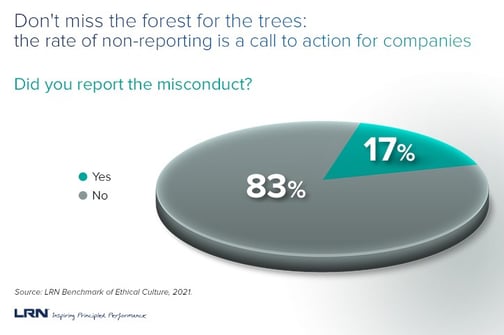
Divergence in demographics
Observed and reported misconduct varies significantly based on demographic factors
Digging deeper into the overall data on observed and reported misconduct, we see significant variation in employees’ experience based on factors such as their tenure, seniority and role, and the industry in which they operate.
Tenure: Newer employees (1 – 5 years) describe witnessing misconduct at higher rates (approximately 45%) than those with 10+ years on the job (29%). There are likely a variety of reasons for this gap. For example, some companies emphasize ethics and compliance education as part of new employee onboarding but neglect to provide refresher training for those that have been around a while. Longer-serving employees may also become more inured to a “this is the way things are done around here” mindset and not recognize that the cut corners here and there amount to an ethics violation. Proactive organizations can mitigate these trends by recognizing that educating your workforce about risks, requirements, and your expectations for behavior isn’t one and done.
Seniority and role: Where you sit in an organization matters. We found that executive leaders observe misconduct at higher rates compared to individual contributors (43% vs. 33%). They are also more likely to report their observation: 92% of executives who witnessed misconduct report it, compared to 72% of individual contributors.
Breaking down the data into different role types, manual, warehouse, or factory employees have the lowest rates of reporting (66%). These findings illustrate the importance for companies to ensure their employees know how to report misconduct as a starter, take care to demonstrate that reporting channels and investigation processes are trustworthy, and protect employees from retaliation.
Industry: There is wide variation in rates of observed and reported misconduct by industry. For example, employees in financial services and pharmaceuticals had the lowest rates of observed misconduct (28% and 30%, respectively), perhaps a result of more stringent regulations—recent major compliance and ethics scandals in these industries notwithstanding. The worst offenders, at least measured by volume, if not impact, are business services/consulting, chemicals, engineering and environmental, and electronics, clocking in at 44%. Education, research, and not-for-profit, and consumer products and services are the two industries with the lowest rates of employees reporting the misconduct they observed: 72% and 73%.
Mind the gap
Stronger ethical cultures better position companies to reduce misconduct
To understand the impact of organizational culture on misconduct risk, we divided respondents into statistical quartiles, defining each quartile based on common cultural archetypes we find in our work (for full definitions and characteristics, see the LRN Benchmark of Ethical Culture report).
Our study found that while rates of observed misconduct are fairly consistent across all culture archetypes, respondents in the top quartile—what we call Inspired cultures—report their observation at much higher rates: 93% compared to 67% of the employees in the bottom quartile.
Employees in Inspired cultures also demonstrate greater awareness of reporting channels, whereas those in the bottom quartile report more knowledge gaps of how and where to raise ethics and compliance concerns. Since companies can only address that which they are aware of, higher level of reporting represents a significant reduction in risk.
Employees in Inspired culture are better equipped to report misconduct
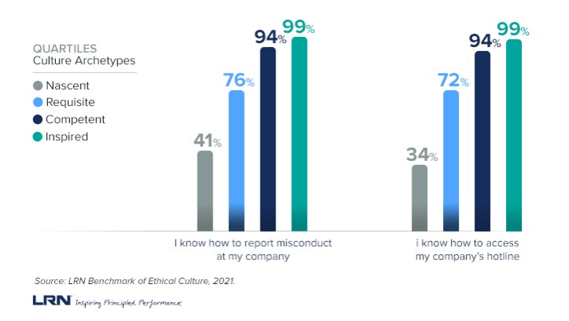
Employees in organizations with healthy ethical cultures are 1.8x more likely to report their concerns to their immediate manager—a strong indicator of trust
Most employees raise ethics concerns to their manager—a best practice—not through the hotline. Our research found that employees in organizations with Inspired cultures, the top quartile in our dataset, did so to a much greater degree relative to those in Nascent culture, or the bottom quartile: 66% compared to 37%. These results are a strong indicator of the greater levels of trust in Inspired cultures, as employees have faith that their concerns will be fully heard, considered, and properly managed.
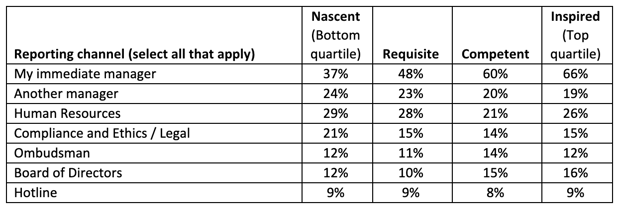
The data also underscore how critical it is that managers are trained and equipped to handle employee concerns and escalate them appropriately.
Top barriers to reporting misconduct are an indicator of company culture
The reasons employees cite for not reporting misconduct shed light into the cultures of their organizations. The top three reasons for employees in the bottom quartile of our study—those with Nascent cultures—can be boiled down to a lack of trust in the company’s organizational justice processes. They fear retaliation for speaking up, don’t think anything will be done (so why bother?), and don’t trust their confidence will be protected. This lack of trust in organizational justice processes is not as pronounced in respondents in the top quartile of our study—those in Inspired cultures. Instead, these respondents take a decidedly less concerned (one could perhaps say cavalier) approach to the misconduct they observed: two of the top three reasons for not reporting are because the person assumed it was a one-time occurrence or that someone else would report it.
Top three reasons for not reporting workplace misconduct

Bottom line: If you want people to speak up, focus on organizational justice
Statistical modeling1 conducted on our dataset showed that organizational justice—that is, the extent to which standards of conduct are applied consistently and employees trust the reporting and investigative process – was the number one predictor of whether respondents were willing to speak out and report misconduct.
In the rest of this piece, we’ll explore the role of this critical cultural dimension in catalyzing ethical conduct. We’ll also share solutions to enhance the processes, experience, and perceptions underpinning your organization’s systems of justice, fairness, and accountability—and in so doing, foster a greater “speak up” culture.
Cultural catalysts
Organizational justice and trust drive ethical performance
It’s easy to do the “right thing” when it’s easy. As many headlines covering corporate scandals demonstrate, it is far harder to do this when under pressure to meet production timelines, deliver sales goals, and other business targets—all of which have been exacerbated by the ongoing COVID pandemic. Statistical analysis on our data finds that the top two predictors of ethical behavior and decision-making when under such pressure are environments characterized by high trust and a sense of organizational justice.
Key indicators of these environments include trust in the company’s leadership; a priority on team and company success above individual success; consistent standards of conduct, regardless of role or seniority; and confidence in the reporting process.
Key indicators of ethical performance

In fact, we found that when trust and organizational justice were high, respondents were 8 times more likely to say that ethical standards were upheld in the face of pressure to meet business objectives.
Building a culture of fairness and justice
5 best practices for ethics and compliance professionals
The following recommendations are drawn from our decades of providing ethics and compliance solutions to leading companies around the world.
- Have the right foundations in place. In order to ensure standards of conduct are applied consistently, organizations must first articulate and communicate what those standards are. We recommend you start with your purpose and values: what is your organization here to do? What values guide you in support of this endeavor? Then, break your values down into clear, measurable behaviors. Ensure all employees understand what they mean and how they apply to their role.
- Demystify the reporting and investigation process. Do employees know what to do or where to go if they do witness misconduct? In addition to having specific policies on reporting, investigations, and disciplinary actions, a simple one-page infographic, flow chart, or summary on the systems and channels of reporting can help provide clarity. These communication assets should complement dedicated awareness-raising campaigns and education, tailored to your employee population.
- Don’t just focus on speaking up—also focus on listening up. Humans were given two ears and one mouth for a reason. Speaking up puts the onus on the individual employees to act, whereas “listening up” is a leadership and organizational capability that can be cultivated. It is critical that managers are trained to handle concerns appropriately, and not just about misconduct; any employee concern should be received seriously. Demonstrating respect and follow through – even if the result is not what the employee hoped for – is critical to maintaining trust and confidence in the organization and its leaders.
- Tell stories and embrace transparency. When cases of misconduct are investigated and are resolved, there can be heavy personal, legal, and material considerations to take into account. A company’s instinct is often to stay quiet in fear of litigation or PR crisis. However, these instances can also provide opportunities to demonstrate you walk the talk when it comes to your values and ethics. Story telling can be a powerful way to illustrate that a company is living up to its promises and to reinforce faith in leadership and the systems that govern how these issues are handed. Such stories—whether they are sanitized versions of your own cases or external examples ripped from the headlines—can be incorporated into company and leadership communications as well as training materials, including manager training. We’ve also seen several organizations promote this kind of transparency by publishing aggregated statistics on reporting, investigations, and disciplinary actions.
- Take the pulse of your employees and maintain engagement. Are employees aware of reporting systems and channels? Do they trust leadership to do the right thing and handle challenges appropriately? Are standards of conduct understood, and do your values guide behavior? Seeking these insights from employees on a regular basis, whether through surveys or other methods, can lend valuable insight and enable you to course correct when—and where—necessary.
About the LRN Benchmark of Ethical Culture
The LRN Benchmark of Ethical Culture is the result of a multi-year, collaborative research effort with data drawn from a cross section of nearly 8,000 employees, representing 17 industries and 14 countries. It builds on three decades of work and supporting research that conclusively proves that ethical cultures don’t just protect corporate reputations, they also propel the bottom line. Register for free access to the report.
Footnotes:
1. LRN used regression analysis, a technique that determines which variables impact an outcome (in this case, employees’ willingness to report misconduct) as well as the magnitude of that impact. In other words, regression analysis helps identify which factors matter most.


